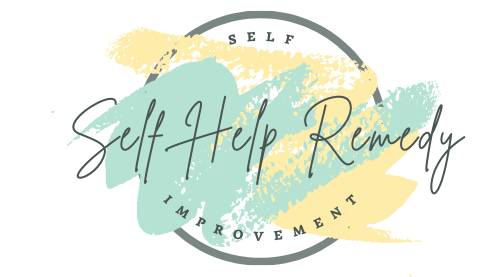Dealing with Feelings of Rejection
Rejection is a sting we all feel at some point. It is as much a part of life as joy and success. But knowing I am not alone doesn’t make it any less tough to handle. Rejection can come in many forms, from not getting the job I wanted to being turned down for a date. Regardless of the scenario, the ache is real.
I often remind myself that emotional pain following rejection is a natural response. It is okay to admit that it hurts. Whether I am overlooked for a promotion or my ideas are dismissed in a meeting, each of these experiences can have an emotional toll. The key is to recognize that the pain is not an indication of my worth, but rather a part of the shared human experience.
There is a distinction to be made between personal and impersonal rejection. Personal rejection is when I feel dismissed by someone important to me. Impersonal rejection could be more about a situation, like a manuscript that gets turned down. Making this distinction helps me contextualize the setback and guide my reactions accordingly.
The impact of rejection is not just emotional; it is physical too. When I am rejected, my brain processes it in a similar way to physical pain. Scientific studies even show that the same areas light up whether the pain is from a physical injury or social rejection. Understanding this helps me grasp why my body and mood take a hit after a rejection and prompts me to treat myself with kindness.
Navigating the Pain: Strategies to Cope with Rejection
I know it hurts. Being rejected can feel like a punch to the gut, and it is completely normal to feel hurt, confused, or even angry. However, how you deal with these emotions can make a huge difference in your healing process.
ACCEPTANCE is key. You have got to start by acknowledging that the rejection happened. It is tempting to deny it or bury it under a pile of ‘what-ifs,’ but let’s be real: that is like ignoring a splinter and hoping it will go away on its own. It won’t. Address it head-on, so you can start moving past it.
Once you have accepted the reality, GIVE YOURSELF PERMISSION TO FEEL. It is okay to grieve the lost opportunity or relationship. Suppressing or ignoring your feelings can prolong the pain. Need to cry? Go for it. Angry? Punch a pillow. Getting those feelings out is a necessary step in the healing process.
Seeking out SOCIAL SUPPORT can be a game-changer. Talk to friends, family, or people who have been through similar experiences. They can offer comfort, perspective, or maybe even a good laugh. Remember, you are not alone, even though it might feel like it.
Finally, indulging in SELF-CARE and showing a little SELF-COMPASSION can be incredibly healing. Eat well, sleep enough, and get some exercise – these basic things can have a big impact on your mood. And cut yourself some slack. You are human, and rejection is part of life. It does not define your worth.
The Healing Process: Reducing Recovery Time
No one enjoys the sting of rejection, but the duration of its hold on us is not set in stone. I know it well; the urge to wallow might be strong, but reducing how long that pain lingers is certainly within our grasp. The key lies in proactive steps designed to help us mend.
Reframing our thoughts is a POWERFUL tool. It involves stepping back and looking at the situation from a fresh angle. Ask yourself, ‘What can I learn from this?,’ instead of getting stuck in a loop of self-blame. It is not about denying the hurt; it is about seeking the constructive threads within the experience.
Next is setting new goals. It is vital to redirect your focus toward positive pursuits. Perhaps take up a new hobby or throw yourself into a project. It is a matter of shifting your energy from what is lost to what can be gained.
Every rejection holds a lesson. Whether it is about personal growth or recognizing what you truly value, each “no” brings you closer to a “yes” that matters. Embrace the search for insight, and recognize this rejection as a step along a path rather than an end point.
Finally, if the path to recovery feels overwhelming, professional support may be the key. Therapists are trained in navigating emotional mazes and can offer personalized guidance. Whether through one-on-one sessions or support groups, help is available, and seeking it is a sign of strength.
Emerging Stronger: Building Resilience after Rejection
It is not the rejection itself, but how you respond to it that can truly define your path forward. After braving the storm of emotions that come with rejection, you start to see a clear sky of potential. The pain, now more of a memory, leaves you with hard-earned wisdom and strength.
Developing a growth mindset transforms stumbling blocks into stepping stones. Every rejection has the power to teach you something valuable, be it about self-awareness, your desires, or your limits. Embrace this mindset and you will become more adept at bouncing back, no matter the setback.
Push the boundaries of your social comfort zone. By widening your network and exploring diverse interests, you will not only enrich your life, but also dilute the impact of singular rejections. Your sense of self-worth becomes less tied to any specific event or person, and more about your varied experiences and connections.
And do not forget to strike a balance. Invest time in discovering what fulfills you outside of social affirmations. Whether it is picking up a hobby, advancing your career, or contributing to your community, these aspects of life can offer immense satisfaction and a sense of purpose.
In celebrating each stride you make, acknowledge how far you have come. The rejections you faced might not have been in your game plan, but your resilience has scripted a new narrative of strength and optimism. You are not just ‘getting by’ after rejection—you are thriving, and that is worth every effort.

